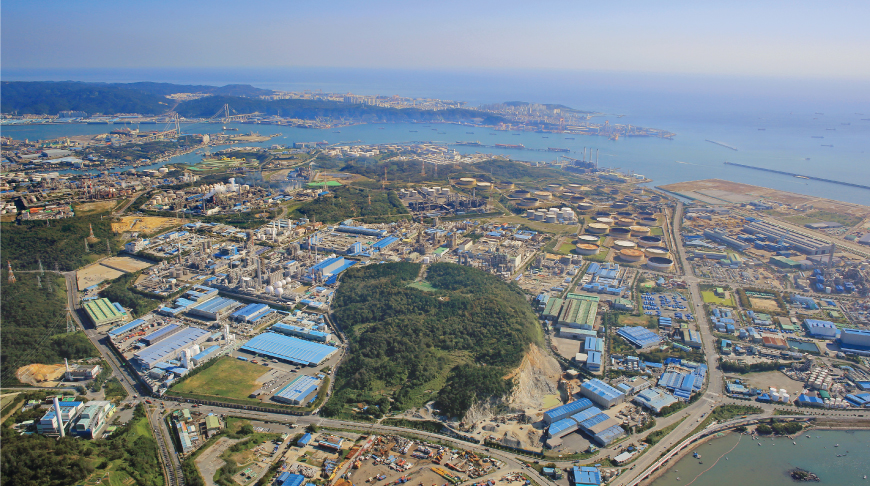The Ulsan Mipo National Industrial Complex spanning 45,595,000 ㎡ is Korea’s first and largest coastal national industrial complex built in 1962 under the government’s drive to industrialize the nation according to the 1st Economic Development Plan. Divided into six districts of the Ulsan Petrochemical Industrial Complex, Yeocheon District, Maeam District, Yongyeon District, Hyomun District, and Mipo District, the complex houses 780 companies including leaders of automotive, shipbuilding, and petrochemical industries such as SK Energy, Hyundai Motor Company, Hyundai Heavy Industries, Lotte Chemical, and Hanwha Solutions.
Overview of Industrial Complex
- Title: Ulsan Mipo National Industrial Complex
- Location: Hyomun-dong and Yeonam-dong of Nam-gun, Dong-gu, and Buk-gu, Ulsan Metropolitan City
- Area
(Unit: 1,000 ㎡)
Achievements of Industrial Complex
The Korean government designated Ulsan in 1962 as a key area for Korea's industrialization under the 1st Five-Year Economic Development Plan by considering its location connecting marine and ground transportation and its vast undeveloped area, which made it easy to build factories and supply water. In April 1964, the country's first oil refinery, built for the country’s economic independence and a stable energy supply, launched operation with a daily capacity of 35,000 barrels. In December 1966, the government finalized a plan to develop the petrochemical industry, and completed the construction of a large-scale petrochemical industrial complex in 1969. In addition, Hyundai Motor Company’s Ulsan factory opened in 1968, leading to the creation of more auto parts makers. Hyundai Heavy Industries' Ulsan shipyard was completed in 1972, and the shipbuilding, petrochemical, and automobile industries grew into Ulsan’s flagship industries. As of the end of 2022, the Ulsan Mipo National Industrial Complex produces KRW 147.3 trillion and exports USD 59.3 billion annually to rank first among industrial complexes nationwide.
Ulsan's designation as a specialized secondary battery cluster drives the transition to the future industry
Despite its unique position, the Ulsan Mipo National Industrial Complex has faced limitations in transitioning to the future industry due to aging infrastructure, heavy dependence on large companies, and a weak R&D base. Its selection as a Smart Green Industrial Complex in 2021, however, helped lay the foundation for the complex to grow into the future by going digital and carbon-free. Moreover, Ulsan’s designation in 2023 as a leader of secondary batteries is expected to boost government support and attract private investment.
* Source: (Text/photo) Korea Industrial Complex Corporation











